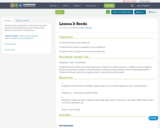
This lesson plan explains how seeds can be dispersed, describes seed adaptations to ensure dispersal and explain the importance of this process.
- Material Type:
- Activity/Lab
- Homework/Assignment
- Lesson Plan
- Date Added:
- 03/04/2015

This lesson plan explains how seeds can be dispersed, describes seed adaptations to ensure dispersal and explain the importance of this process.

Make a copy of this Google Jamboard. You can uses it as an assignment, exit ticket, or assessment in your Google Classroom or LMS. There are two slides. The first the students has to complete the life cycle by dragging the correct picture to the accurate place. The second slide the student then has to type a paragraph explain the life cycle of a butterfly, using vocabulary words like egg, larva, chrysalis, and metamorphosis.

You are part of the NASA design crew and your task is to design a suit to keep the human body safe from the hazards of deep space. Are you up to the challenge? This is an ADA compliant document.

Living and working in space presents many challenges for humans. Use this ADA Compliant student guide to explore what many of those challenges are as well as possible solutions.

While living in space can seem like nothing but exciting, astronauts encounter many physical, biological, and psychological hazards. Use this guide to explore more about living and working in space.

In this easy-to-do activity you will simulate the fluid shift felt by astronauts upon entering space.

Have you ever dreamed of becoming an astronaut? Use this slide show presentation as an introduction to the many challenges of living and working in space.

Living and working in space presents many challenges for humans. Use this student guide to explore what many of those challenges are as well as possible solutions.
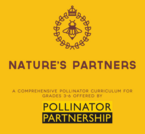
As part of our continued commitment to education, the team at The Bee Cause Project has created this companion document, Educator’s Curriculum Guide, to supplement the Nature’s Partners curriculum.Our Tips from the Hive are designed to add layers of concept extensions, optional digital methods of delivering content, and support to educators that are either brand new or experienced environmental educators. The Buzz Worthy Resource Materials are video links, notable articles, and more printable resources, while the Bee Cause Book Club highlights recommended readings for students of all ages. Several titles have quality read-aloud links as well.

This webpage from the Fast Plants website explains how to pollinate Fast Plants, including instructions for making bee sticks and pollination videos and tips.
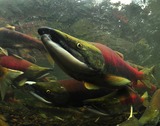
Students model the life cycle of a salmon by moving from station to station following directions they receive on the station cards. They experience the challenges, both natural and human-caused, that salmon face.

Download and print this colorful "Science Inquiry Map" Poster featuring the web of inquiry processes as described by the Five Essential Features of Inquiry from the National Science Education Standards. In addition, the model of inquiry described by the Five Essential Features aligns directly with the Science Practices described in the Next Generation Science Standards. Generally, this poster is used by elementary and middle-school teachers to support learners in being metacognitive about what science practices are in the foreground of their current work during an investigation.

This document is the step-by-step instructions for planting Fast Plants in a deli-container growing system like is used in Reading Green. The instructions include measurements that are then integrated into mathematics problems that are on the flip side of the planting instructions. The instructions are illustrated by our Fast Plants artist, Amy, to help all learners understand the steps.
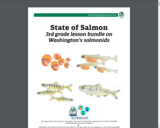
This learning sequence is anchored in the phenomena: Salmon populations in the Pacific Northwest are declining.
Part of the job of Washington Department of Fish and Wildlife (WDFW) is to figure out why salmon populations are declining and create plans for how to help increase fish populations. Throughout this unit, students will engage with the phenomenon of Pacific salmon population decline as they explore salmonid species and discover how WDFW raises healthy fish in hatcheries.
Students will explore salmonid life cycles and discover patterns among life cycles of plants and animals who interact with salmon. Students will then learn what makes healthy habitats for salmon. They will evaluate solutions to the problems of salmon migration above and below dams and examine salmons’ role in a healthy river system. Students will embark on a virtual field trip (in person field trips also available) to a WDFW fish hatchery to learn about current practices in hatchery management and identify ways the hatchery meets the habitat needs of fish. Finally, students will be called to work as an engineering team and help develop a tool to support salmon recovery by working as conservation engineers.
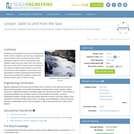
Students are introduced to the basic biology behind Pacific salmon migration and the many engineered Columbia River dam structures that aid in their passage through the river's hydroelectric dams. Students apply what they learn about the salmon life cycle as they think of devices and modifications that might be implemented at dams to aid in the natural cycle of fish migration, and as they make (hypothetical) Splash Engineering presentations about their proposed fish mitigation solutions for Birdseye River's dam in Thirsty County.